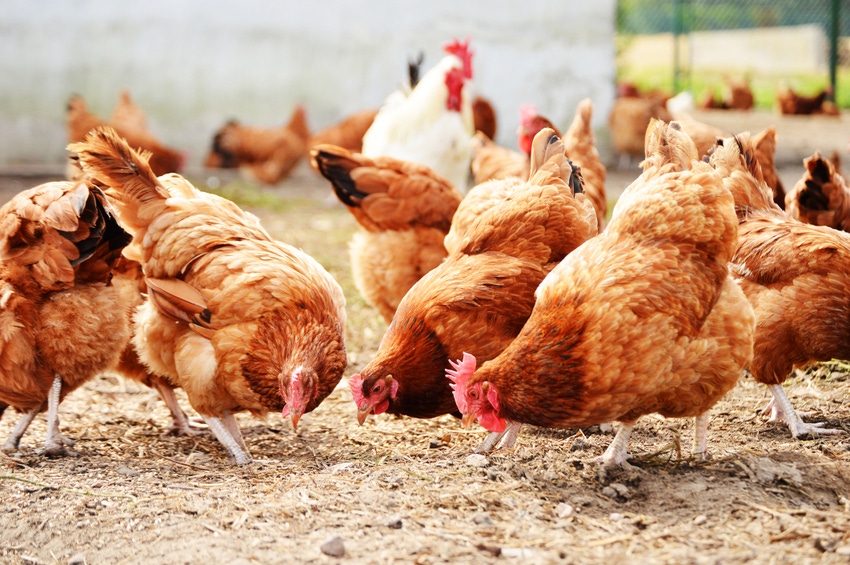New device to detect poultry diseases
Project to be completed in December 2020, with final device approval expected in 2021.
January 13, 2020

With a new portable device, it may be possible to detect salmonella, campylobacter and avian influenza in poultry and food production in less than one hour, according to the Technical University of Denmark (DTU).
Soon, pathogenic microorganisms can be detected faster than ever before with a newly developed device called Vetpod that reduces the response time on samples collected in poultry or fresh meat production. It normally takes up to a couple of days to find out if poultry is infected, as the samples must be taken to a laboratory, cultivated and analyzed, DTU said. However, Vetpod takes only 30-60 minutes.
Vetpod was developed by DTU in the Vivaldi research project -- a collaboration with several European partners, including the Swedish veterinary institute, the University of Parma and a number of companies, DTU said.
Since the device is so small that it can be held with one hand, all aspects of testing for infectious diseases can be done on site at the poultry or food producer, enabling quick identification of any problems, Mogens Madsen, senior executive officer at DTU Bioengineering, explained.
“The project is driven by a constant demand for increased speed in food production from farm to table. It’s about avoiding disease in humans and not harming animal production. There’s, thus, a great need for rapid methods that can detect any problems before the food goes out to consumers,” Madsen said.
Lab-on-a-chip
The device was developed in a project headed by professor Anders Wolff from DTU Bioengineering, in close collaboration with professor Dang Duong Bang from DTU Food. With the help of a specially designed chip that was also developed and produced in the clean room at DTU, the device can examine whether samples taken from the animals’ throat or rectum are infected with unwanted microorganisms, the announcement explained.
“Vetpod can quickly detect viruses and bacteria based on their genetic material. We use a familiar method that we’ve made much simpler and more user friendly,” Wolff said.
The method is called loop-mediated isothermal amplification (LAMP). With LAMP, the genetic material of the microorganisms can be multiplied, he added.
According to the DTU announcement, in a Vetpod test, samples from the animals are placed in what looks like small holes in the chip that contain different reagents and enzymes in dry form. When the chip is inserted into the device, the samples are heated to 65°C. This causes a reaction in which a specific piece of the microorganism's genetic material is copied. The reaction forms a byproduct called pyrophosphate, which, in turn, reacts with magnesium ions that make the liquid in the sample cloudy. This means that if the sample is contaminated, less light will come through it. The result can be read on a display after 30-60 minutes.
“When the samples are positive, the DNA code can then be analyzed in detail in a laboratory to find possible routes of transmission and infection risks. That’s why Vetpod is a tool for screening,” Wolff said.
Madsen added, “A great many samples are taken out there to monitor the health of the animals in general or in connection with outbreaks. This overloads the laboratories, because the samples just keep coming in. With Vetpod, you can quickly find out if there’s a problem and concentrate the effort. That’s the great value of the project.”
Close to commercialization
The researchers have ensured that all components of the Vetpod are standard components, so the device itself is easy to put into production, DTU noted. They are already in dialogue with the biotech company DNA Diagnostic in Denmark, which specializes in testing systems for the poultry industry.
DNA Diagnostic chief sales officer Jogvan Houmann said the company sees a market for Vetpod. “The potential is really good. There’s definitely a market for the product, and it should be successful. Vetpod can be used locally, which is what many producers need.”
Houmann added that while major poultry production companies often have well-functioning and established systems for pathogen control, Vetpod can play a key role for small and medium-sized producers, especially where a portable device is a clear advantage.
Over the coming year, Vetpod will undergo validation, the purpose of which is to prove that the new technology is at least as good at detecting viruses and bacteria as conventional methods, DTU said.
“The preliminary tests show that Vetpod is just as precise and sensitive as existing methods. Our solution is just much faster, so it’s going well,” Wolff said.
Vetpod so far detects salmonella, campylobacter and avian influenza, but the solution is generic and can, therefore, be further developed to test for other bacteria such as Escherichia coli or listeria, DTU noted.
You May Also Like



